
Air Raid on Japanese Mainland by U.S. Forces
The number of air raids on the Japanese mainland was approximately 2,000.
The number of incendiary bombs dropped was approximately 20.4 million, the number of bullets fired was approximately 8.5 million, and the number of casualties was 459,564 at a certain point.
Japan offered peace negotiations to the US in January 1945. The conditions at this time were the same as those for the end of the war in August, so if the US had agreed to peace negotiations at this time, the Iwo Jima landings in February 1945 would not have been necessary and US forces would not have suffered a total of 28,686 casualties (6,821 killed in action and 21,865 wounded in action).
The Battle of Okinawa, which began on 26 March 1945 when US forces landed in the Kerama Islands, inflicted heavy losses of 65,600 casualties on US forces, but these losses were also unnecessary.
Had the US agreed to peace negotiations, there would have been no air raids on Tokyo and no atomic bombs.
Chicago Tribune, August 19,1945
— KUIDAORE (@KUIDAORE2014) April 11, 2023
JAPS ASKED PEACE IN JAN. ENVOYS ON WAY -- TOKYO
Roosevelt Ignored M'Arthur Report On Nip Proposals
By Walter Trohanhttps://t.co/OZDTQ1FPWV pic.twitter.com/n2nIKn5T7f
President Roosevelt was a nefarious man who turned the American people into war criminals.Japan offered peace negotiations to the US in January 1945. The conditions at that time were the same as those for the end of the war in August, so if the US had agreed to peace negotiations at that time, there would have been no air raids on Tokyo and no atomic bombs.
Destruction rate of 90% or more
Toyama Air Raid
(Toyama Air Raid (March 10, 1945)
Casualties: 3,000 people
Urban area destruction rate: 99.5
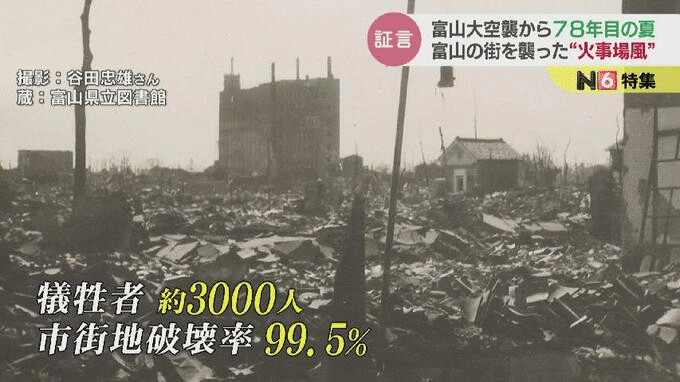
Destruction rate of 80% or more
Fukui Air Raid
The loss rate of the Fukui urban area was 84.8%.
Of a population of 103,049, 85,603 were affected.
21,992 of 25,691 households were affected
The number of fatalities reached 1,576 (915 women, 661 men)
6,527 seriously and slightly injured, of which 108 subsequently died.
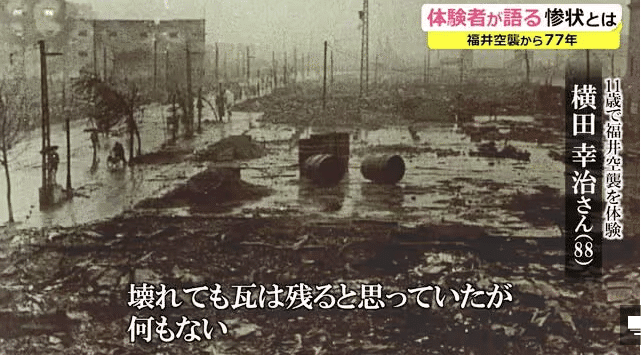
Tsu Air Raid
The air raid on July 28-29 resulted in 1,239 dead and thousands injured by M47 incendiary bombs, the first used by the U.S. military in this war.
The total casualties for the prefecture as a whole amounted to some 6,500, but the actual number of casualties was much higher.
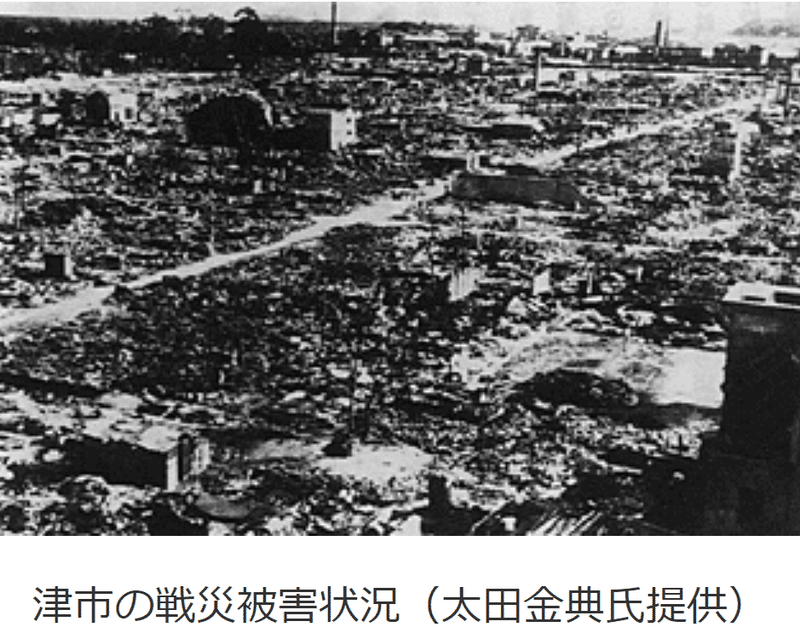
In Mie Prefecture, there were U.S. soldiers who machine-gunned civilians picking up shellfish.
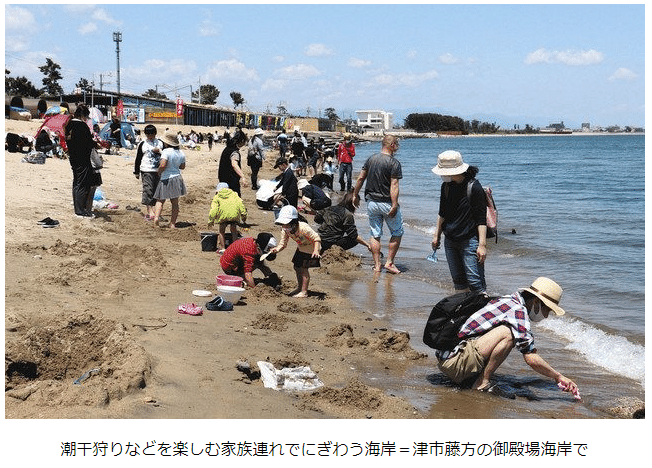
Hachioji Air Raid
The Hachioji Air Raid lasted two hours and destroyed 2.9 km2 of the city's 3.6 km2 area. 1600 tons of incendiary bombs were dropped in two hours, the third largest amount of bombs dropped in an air raid on the Japanese mainland. The amount of incendiaries dropped per civilian was 10.
The number of dead was 445 (including the former Asakawa-cho and other areas outside of Hachioji City), and the number of injured was over 2,000. 70,000 people were affected, and 14,000 houses were destroyed (80.0% of the city area, the fifth most damaged after the air raid in Tsu).

Destruction rate of at least 70
Takamatsu Air Raid
At 2:56 a.m. on July 4, an air raid suddenly began, and by the time about 10 minutes had passed, the center of Takamatsu City was a sea of fire. Even so, the B-29s continued to bomb the city persistently, and it took 106 minutes for the bombing to be completed. The bombs dropped at this time were a staggering 24 tons of high-performance bombs and 809 tons of incendiary bombs (an average of eight incendiary bombs weighing approximately 2.7 kg per 100 m2). The majority of damaged buildings were ordinary residences, but government offices, schools, shrines, temples, churches, banks, companies, and factories were also heavily damaged. Nineteen of the 30 schools in the city were damaged, 27 of the 50 Shinto shrines, 63 of the 79 temples, and 16 of the 26 churches were destroyed by fire.
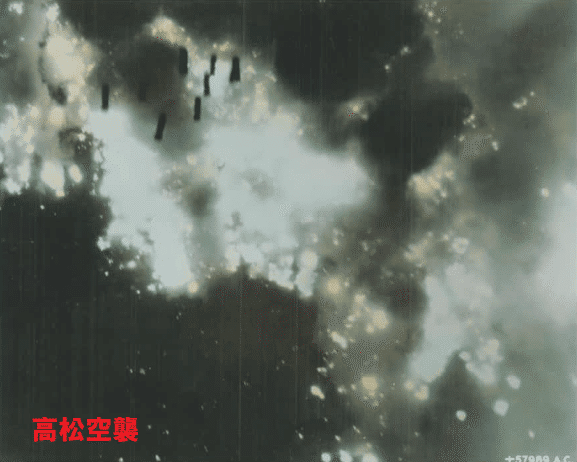
Kuwana Air Raids
Kuwana City was bombed five times between January and July 1945.
As a result, the city area was almost completely burnt to the ground, with 6,950 houses destroyed and 416 people killed (657 according to the "Mie Prefectural Police History"). The affected area was 91% of the total area, and 70% of all citizens were affected.
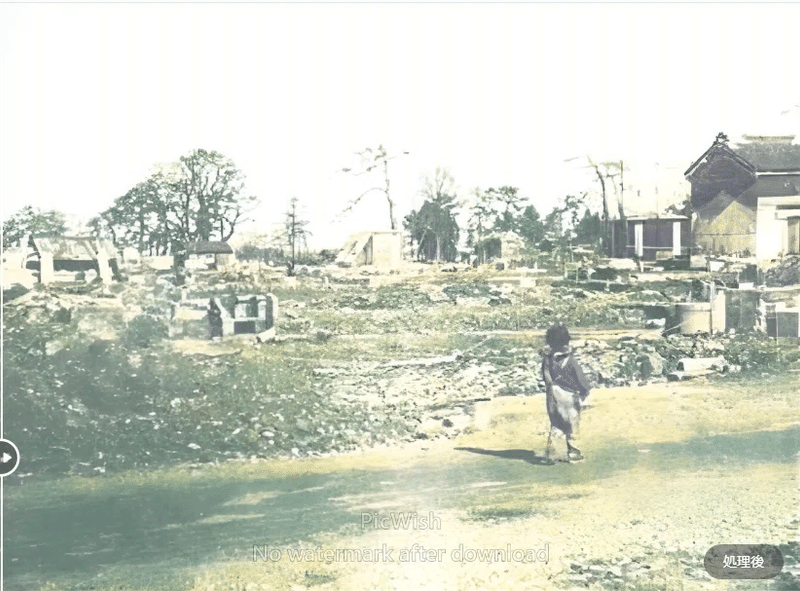
Ichinomiya Air Raid
Ichinomiya City was hit by a full-scale air raid in July 1945. From late at night on July 12 to early the next day, a formation of about 20 B-29s invaded the city and dropped incendiary bombs on the Haguri and Nishinari districts in the northern part of the city and on Imaise-cho.
Furthermore, at around 10 p.m. on the 28th of the same month, about 260 B-29s flying out of the Marianas Air Base entered the skies over the city and concentrated their incendiary bombs in a wave of attacks.
The entire city was instantly turned into a sea of fire, and the sound of moaning and suffering echoed through the air, creating a living hell in an instant. The attack was repeated until 2 a.m. the next morning, and the fire burned for three days and three nights.
The two air raids resulted in the destruction of 10,468 houses, or 83% of the total 12,600 houses in the city, and 41,027 people, or 71% of the city's population of 57,588, were killed and 4,187 people were injured. 80% of the 4.96 square kilometers of urban area was reduced to ashes.
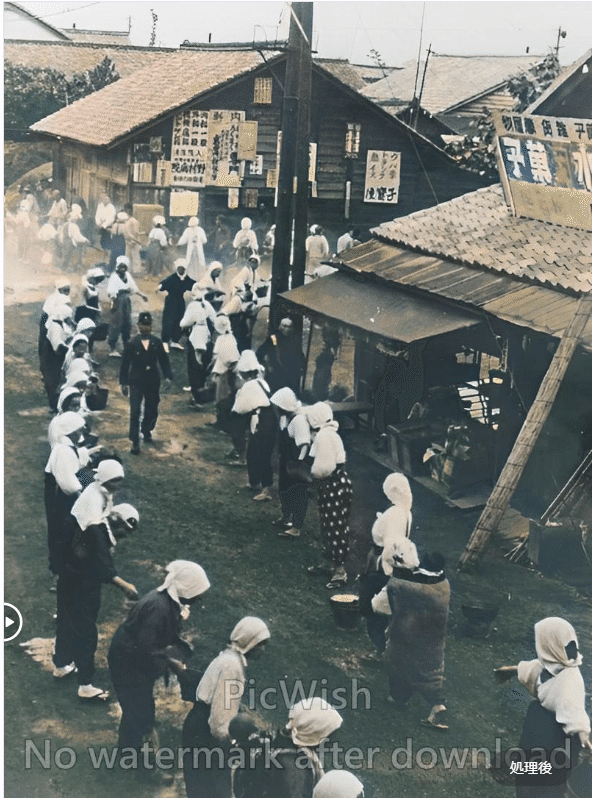
Imabari Air Raid
April 26, 1945
Number of dead: 64 Injured: unknown Type of raid: 15 B-29s
Damage situationU.S. forces dropped 264 500-pound bombs on the city center based on the recognition that there was something like an airfield in Imabari.
U.S. soldiers machine-gunned female students fleeing the city.
Twenty-four female students were killed by machine gun fire from the sky. According to Sankei's research, the third air raid on Imabari took place between the night of August 5 and early morning of August 6, 1945, killing more than 550 people, including citizens and mobilized students from inside and outside the prefecture. 64 people were killed in the first raid by yahoo.
Gifu Air Raid
About 900 people died, about 100,000 people were affected (the population of Gifu City at the time was about 150,000), 20,000 houses, half of the city's total, were destroyed, and more than 70% of the city was destroyed by fire.
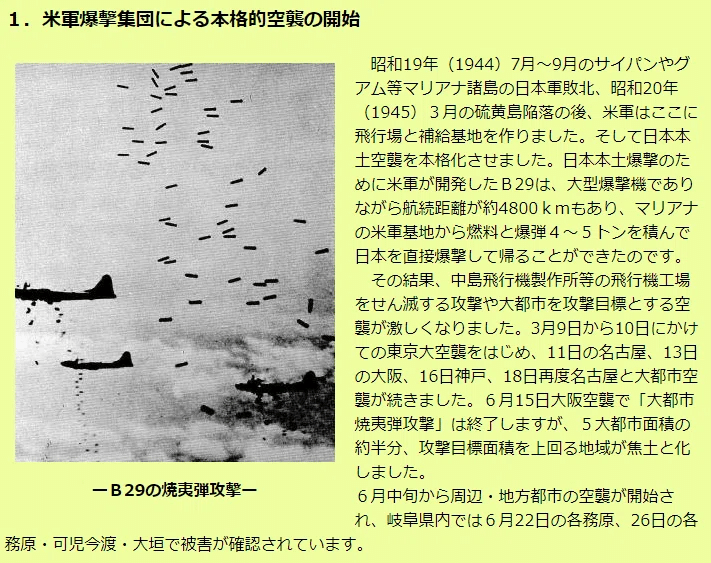
Tokushima Air Raid
Shortly after 1:00 a.m. on July 4, 1945, more than 100 U.S. B-29 bombers attacked Tokushima City, dropping a large number of incendiary bombs in an indiscriminate attack that lasted about two hours. The city center, which had been mostly made of wooden houses before the war, was burned to the ground in a single night. Only a few concrete buildings and other structures survived the fire, and approximately 60% of Tokushima City was destroyed by fire. The fire cruelly took the lives of unarmed citizens, including children, women, and the elderly. About 1,000 people were killed, 2,000 injured, and 70,000 affected. Many people were missing.

Fukuyama Air Raid
At that time, the population of Fukuyama City was 58,745, of which 47,326 were affected. 81% of the population was affected, resulting in a catastrophic disaster. 742 people were slightly injured, 122 were seriously injured, and 355 people were killed.
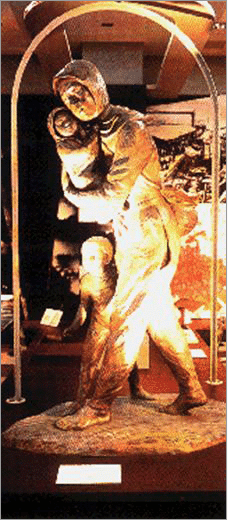
Matsuyama Air Raid
1945 At midnight on July 26, 1945, 128 B-29s of the U.S. Army Air Forces flew northeast over the Bungo Channel, via Cape Sada to the west of Matsuyama City, and dropped the first bombs on Shinmachi (near present-day Shimizu-cho 1-chome) at around 11:30 p.m., about 30 minutes after the air raid warning was issued, then turned right and flew around Shiroyama for about 2 hours, The first incendiary bombs were dropped on Shinmachi (near present-day Shimizu-cho 1-chome) around 11:30 p.m., about 30 minutes after the start of the raid.
The casualties were 251 dead (117 men and 134 women), 8 missing, and the number of injured was beyond grasp. The old town of Johoku and parts of Dori-machi (near Heiwadori 2-chome) were left as burnt ruins, and 14,300 houses, or 55% of the total number of houses, were damaged, and 62,200 people, or 53% of the population, were affected.
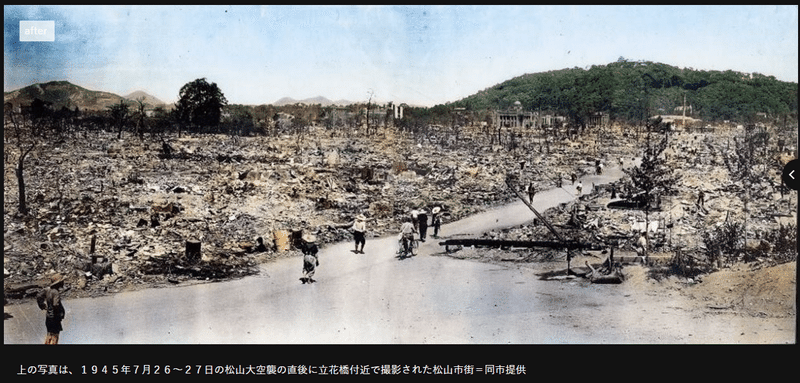
The Great Himeji Air Raids
The first one was on June 22, 1945. The Kawanishi Aircraft Himeji Works, located east of Kyoguchi Station on the Bantan Line, was the center of the bomb attack. The number of fatalities was 341. The number of victims was 10,220. The second attack occurred late at night on July 3, 1945. The entire urban area of Himeji was attacked by incendiary bombs. The death toll was 173. The number of victims was 45,182.

The Great Hamamatsu Air Raid
Hamamatsu, the most bombed city in Japan The next target of the U.S. military after the bombing of major cities was the bombing of small and medium-sized cities. The first targets were the military industrial cities of Kagoshima, Omuta, Hamamatsu, and Yokkaichi. Why Hamamatsu?
Hamamatsu was targeted because (1) it had a military airfield, (2) it had many munitions factories (including Japan's three largest railway factories and the propeller-built Yamaha factory), (3) it was in a direct line from the Mariana and Iwo Jima bases, making it an easy target, and (4) it was the end of air raids on other cities. (4) B-29s dropped their surplus bombs on Hamamatsu after raids on other cities and returned home. Hamamatsu was scorched to the ground by incendiary bombs, machine-gun fire, 250-kilo bombs, pumpkin bombs, ship-borne fire, and all manner of attacks other than atomic bombs.
The final horror was the shelling on July 29.
U.S. forces also bombarded Manila, killing many Manilans.
The U.S. later propagandized it as the Manila Massacre, claiming that the Japanese had committed the massacre.
After the Battle of Okinawa, U.S. forces launched a campaign to seize Japanese air and sea control, launching a one-hour attack with 2,160 shells from eight warships. Unlike previous air raids, the explosions were completely different in sound, power, and destructive force. Those who watched on the beach said it was like a fireworks display.
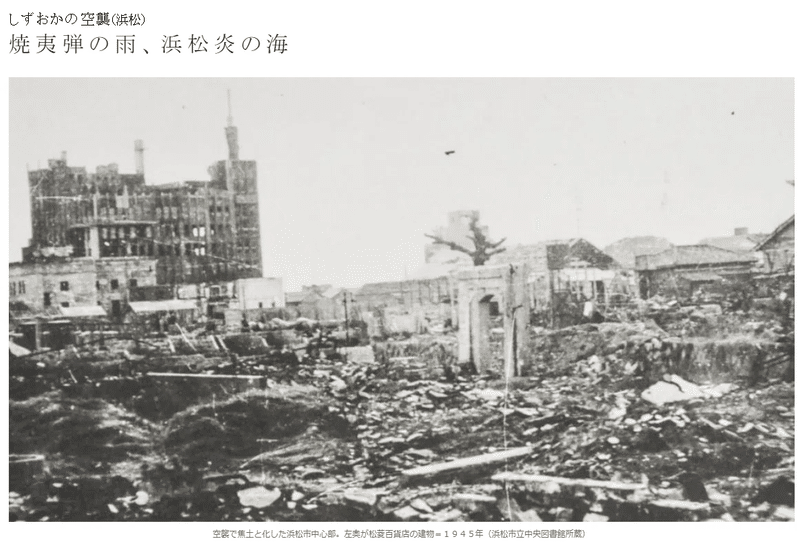
Destruction rate of 60% or more
Hiroshima Air Raid Destruction rate over 60
1945.4.30 One B29 dropped 10 bombs at around 6:55. 10 dead, 5 seriously injured, 11 slightly injured, 14 buildings completely destroyed, 15 buildings half destroyed, 5 buildings completely burned down, 5 buildings half burned down, 200 people affected
1945.8.6 4 B29s (1 weather observation plane flew in beforehand, accompanied by 2 observation planes in addition to an Enola Gay carrying the atomic bomb at the time of the bombing).Dead Until the end of December 1945, about 140,000 people (error +/- 10,000) It can be inferred from the death toll counts that the bombing was an inhumane bombing that was completely different from other bombing damage.
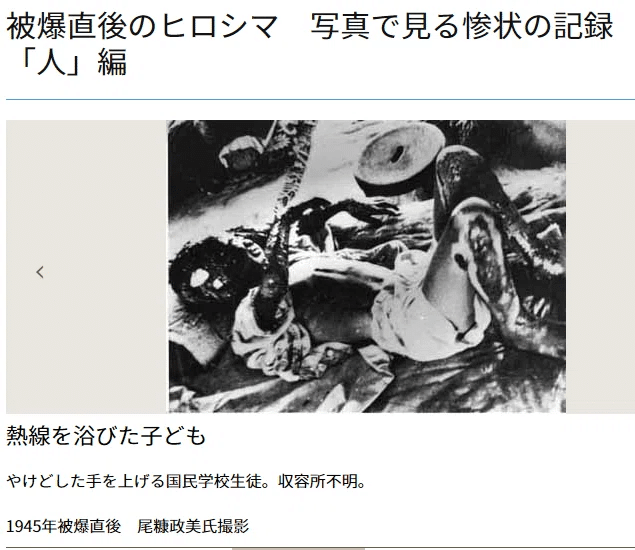
Okazaki Air Raid
Starting at 0:52 a.m. on July 20, 1945, Okazaki was bombed by a wave of 127 U.S. B-29 bombers (130 to 132 sorties) for about two hours. Three types of bombs were used: M47 incendiary bombs, E46, and M17. The volume dropped was 857 tons. The central area of Okazaki City (then a former city section with a population of about 90,000) was a sea of fire and a burnt field.
The U.S. military reported that 68% of the city's built-up area and 81% of the central city area were destroyed. Compared to other cities, the city ranked 10th among 400 cities, towns, and villages in terms of the amount of bombs dropped per area and 18th in terms of the destruction rate by city (Chunichi Shimbun).
The number of war and air raid fatalities was initially reported as 207 (including 4 by machine gun fire) and 13 missing (Okazaki War Reconstruction Journal), but later 250 (2008), and further investigations by a record keeping committee revealed that the number of fatalities was currently 280 (including 8 by machine gun fire). The number of houses affected was 7,543, and the affected population was 32,068.
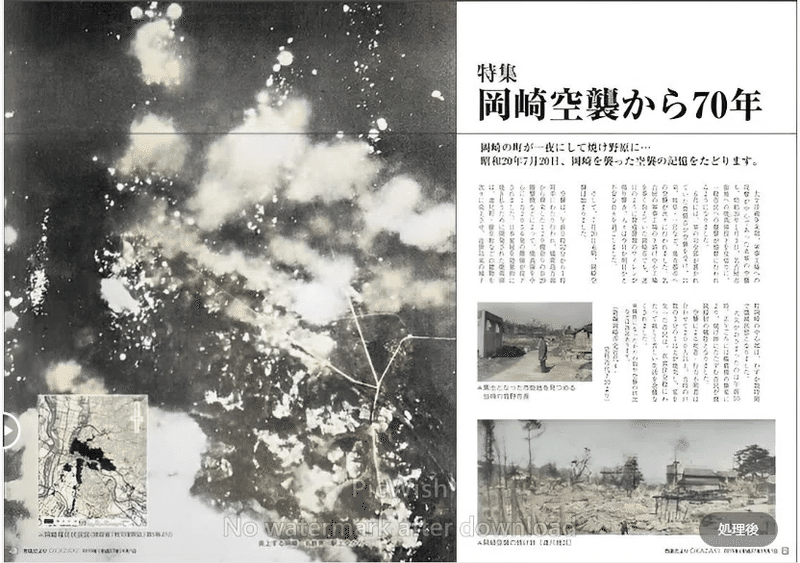
Tsuruga Air Raid
The air raid on Tsuruga late at night on July 12, 1945, was the first on the Sea of Japan side of the city. Since mid-June, U.S. air raids on the Japanese mainland had shifted their targets to regional cities such as Kure and Fukuoka, and the counterattacks by anti-aircraft guns had become quite poor. Tsuruga City (population 31,000) was the smallest of the cities targeted. The bombing, which lasted a little over two hours, destroyed 4,119 houses (4,273 according to the Reconstruction Office survey), or about 70% of all houses in Tsuruga City, and nearly 20,000 citizens lost their homes. In addition, more than 109 people (161 according to the report of the Strategic Bombing Survey Team) were killed in the city and Higashiura/Togo village, many of whom were considered to have died immediately, and more than twice this number were injured ("Tsuruga City War Reconstruction History," Air Raids in Japan, 5).
Shizuoka Air Raid
First Phase of Conventional Bombing November 24, 1944 - March 4, 1945
Bombs were dropped on this area on the way to and from Nakajima Aircraft Musashi Works in Tokyo: December 27, 1944; January 27, 1945; February 4, 193 Dropped on Miyashiro and Otemachi in Shimizu; 3 killed (Note 1) March 6 Dropped on Nishijima, Ichichu, and other areas in Shizuoka; 5 killed.
Phase II War Crime Bombing of Civilian Targets March 10-June 15, 1945
The commander-in-chief is replaced by Lemay, and the operation is switched to night incendiary raids to burn cities. after burning seven major cities following the Tokyo bombing on March 10, the B-29 squadrons move to support the Battle of Okinawa.
From the night of June 19 to the early morning of June 20, 1945, a large formation of more than one hundred B-29s attacked the city and dropped incendiary bombs. The city was almost completely destroyed by fire, with 221 towns and cities affected, 24,459 households affected, 114,000 people affected, 1,873 dead, and 600 injured. Damage from the 12 air raids on Shizuoka City, both before and after the war, included 25,239 houses destroyed by fire, 1,483 houses totally or partially destroyed, 1,873 dead, 830 seriously injured, and 118,746 people affected, with an estimated loss of 60 billion yen.

Nagaoka Air Raid
The air raid lasted until 10:10 a.m. on August 2. 80% of the city was burned to the ground and 1,488 lives were lost in the one hour and 40 minute raid. 925 tons of E46 focused incendiary bombs were dropped and more than 163,000 incendiary bombs and submunitions rained down on Nagaoka like a heavy rain. Nagaoka was burned to the ground. It was such a tremendous air raid that it can be said that no town in the city area at that time was not hit by incendiary bombs.
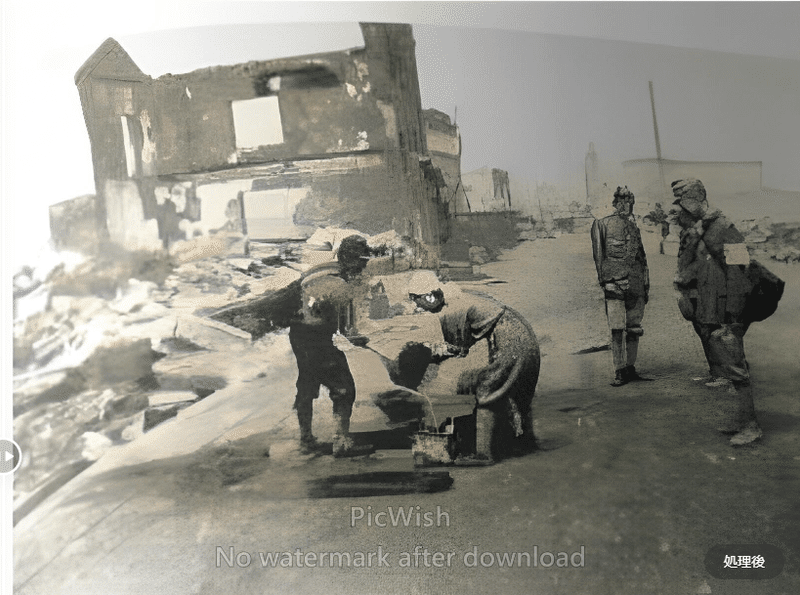
Mito Air Raid
August 2, 1945. At 0:31 a.m., a U.S. B-29 bomber entered the skies over Mito and dropped incendiary bombs. The bombardment lasted about 1 hour and 45 minutes, and more than 300 people lost their lives.
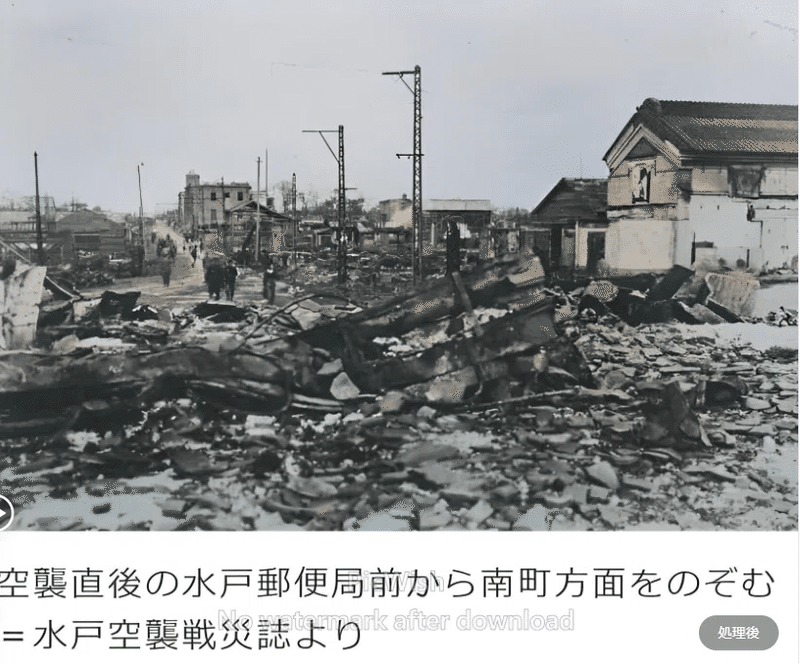
Kofu Air Raid
Between 23:47 on July 6 and 1:48 on July 7, 1945, 131 U.S. B-29 bombers from the Marianas Air Base in Guam bombed Kofu with 970.4 tons of incendiary bombs. The city of Kofu was a sea of fire, and approximately 74% of the urban area was consumed. The number of injured was 1,239 and the number of damaged houses was 18,094. According to a survey conducted in July 1974, the death toll was 1,127.

Akashi Air Raid
1945.1.19 Number of dead: 322Number of wounded: 141Total tons of bombs dropped: 154 tons; damage to approximately 9.6 hectares of the city
1945.6.9 Casualties 664 Injured 600Attacked by 24 B-29s, dropping 144 tons of M56 bombs. 269 civilians evacuated to Akashi Park lost their lives.
1945.6.26 Number of dead 142 wounded 207Attacked by 31 B-29s. They targeted 9 targets in the Hanshin and Chukyo areas. 184 tons of bombs were dropped on Akashi, causing extensive damage.
1945.7.7
Number of dead 360
Casualties 190
Attack by 124 B-29s, target shifted from Kawasaki Aircraft Works to Akashi urban area, where indiscriminate incendiary attacks were launched against small and medium-sized cities. In Akashi, 1,045 tonnes of incendiary bombs were dropped. 24% (109 ha) of Akashi city and 74% of the Kawasaki Aircraft Company were damaged.
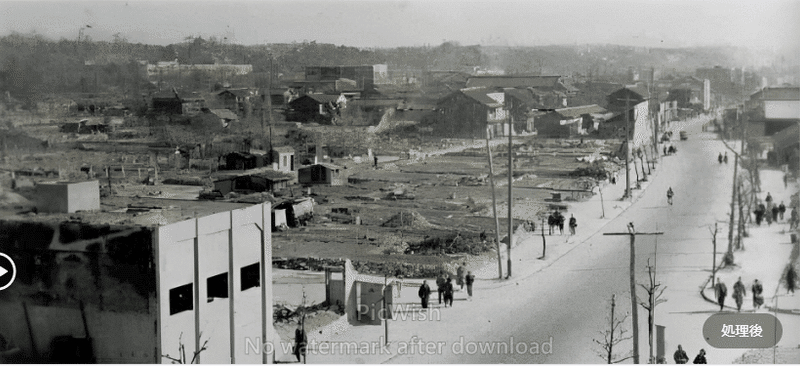
Okayama Air Raid
On 29 June 1945, the town of Okayama was bombed by 140 B-29 bombers of the US Army. The air raid left 63% of the city burnt to the ground and many people injured and killed.
Number of fatalities: 1,237.
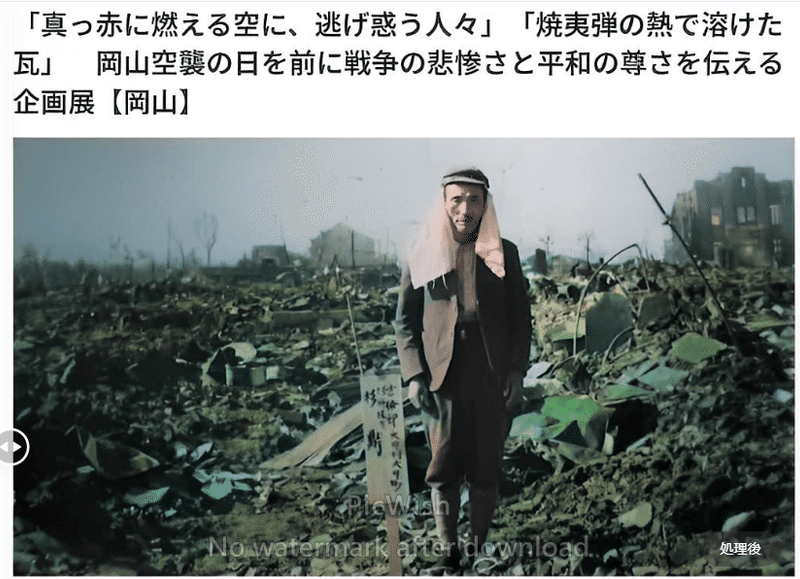
As for the horrors of war, wouldn't an attack on a civilian target be a war crime, and should be called an atrocity by the US military?
Destruction rate of more than 50
Kobe Air Raid
The Great Kobe Air Raid of 1945 is estimated to have killed more than 7,500 people in three indiscriminate bombings. The term is often used to refer to the 17 March1945 bombing, which caused extensive damage to the western half of the city, including theHyogo andHayashida wards, and the 5 June1945 bombing, which destroyed the eastern half and towns and villages in the Hanshin area. Kobe and the surrounding area were bombed 128 times, both large and small, in the eight months from 3 January1945 to the end of the war.
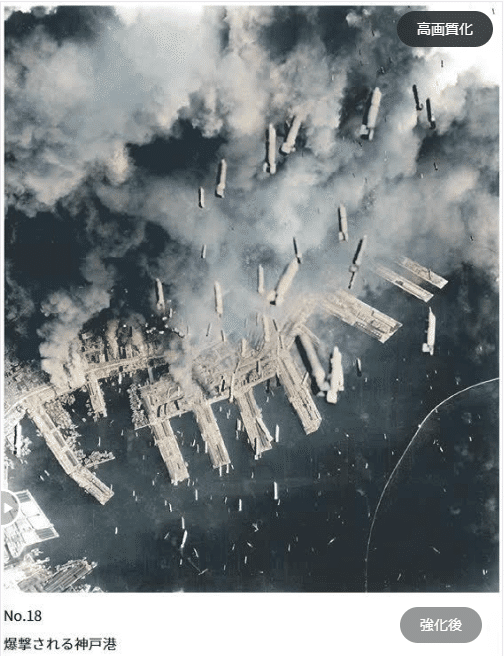
Tokuyama air raid
The air raid on the Tokuyama city centre started at 0:22 on 27 July.
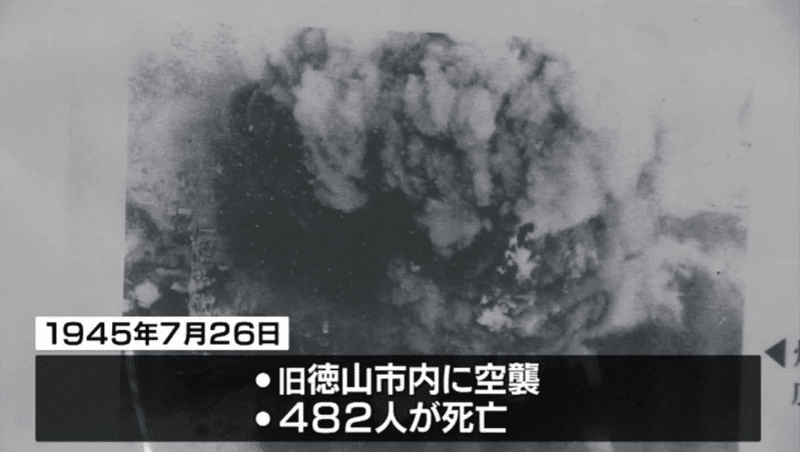
Wakayama Air Raids
Largest-scale air raid ( strategic bombing ) on the centre of Wakayama City,Wakayama Prefecture, which took place between midnight 9 July and early morning 10 July1945.
Dead - 1,208
Seriously injured - 1,560
Slightly injured - 3,000
Missing - 216 people
Affected - 113,548 people
Houses destroyed - 31,137

Shimizu Air Raid
On 7 July 1945, a total of 934 tonnes of a combination of highly combustible M47 incendiaries and powerful penetrating M50 incendiaries were dropped. 50% of the US targeted city of Shimizu was burnt to the ground, claiming 151 lives.
In the early hours of 31 July, artillery fire terrorised the people of Shimizu.
44 people were killed.

Toyohashi Air Raid
On 18 June 1945, neighbouring Hamamatsu City and Yokkaichi City on the opposite shore were successively bombed and set ablaze, and Toyohashi, where the 15th Division was stationed, was expected to become a target of air raids. At around 11:43pm on 19 June, the first incendiary bombs were dropped and the Yagyu River Canal River North area began to burn. Another minute later, the area near Matsuyama-cho in the centre of the city was hit. Soon most of Toyohashi's urban area was engulfed in flames and became the target of a thorough wave of incendiary attacks by a total of 136 B-29s with 15,000 incendiary bombs.
Number of affected households 16009.
Affected population 68502.
Dead 624 people.
Seriously and lightly injured 346 people

Uwajima Air Raid.
Around 01:00 on 29 June, Uwajima was bombed for the first time with incendiary bombs. The initial target was not Uwajima, but Moji, and three of the four B-29s that failed to hit their initial target dropped on Uwajima.
In her memoir, Mrs H, who survived the disaster in the immediate neighbourhood with her two-year-old eldest daughter, her husband's parents and younger siblings in the absence of her husband who had gone to war, was startled and covered up when oil from an oil incendiary bomb that fell in the middle of the night broke through a sliding door and started burning in her eldest daughter's hair.
Of the 180 cities on the list drawn up by the US for air raids on small and medium-sized cities, Uwajima was number 95. In the end, 57 small and medium-sized cities were bombed, Uwajima being the 28th.
The city of Uwajima in Ehime Prefecture has been hit by at least nine air raids since 10 May 1945, with approximately 70% of the urban area destroyed by fire and 278 people reportedly lost their lives.

Tokyo air raids
In terms of overall civilian casualties from Tokyo air raids, there were more than 60 raids in which the wards of Tokyo were affected. The number of confirmed dead bodies is approximately 105,400. The number of injured is about 150,000, the number of affected people is about 3 million and the number of affected housing units is about 700,000. The area burnt down is approximately 140㎢, which is approximately 50% of the urban area of the district and 25% of the total area of the wards. Tokyo as a whole, including Tama and the Izu and Ogasawara Islands, was hit by more than 100 air raids.
In many areas, paintings document how terrible the US war crimes were, and in some parts of the Tokyo air raids, documentary photographs survive.
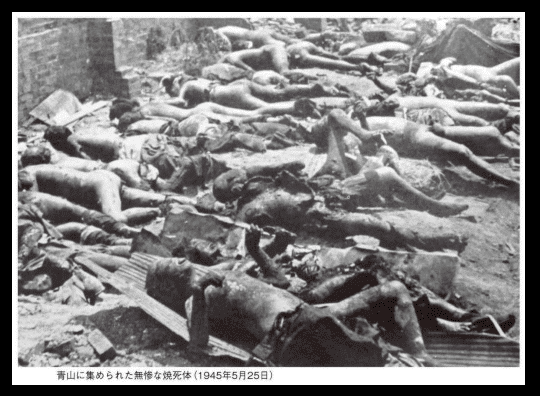
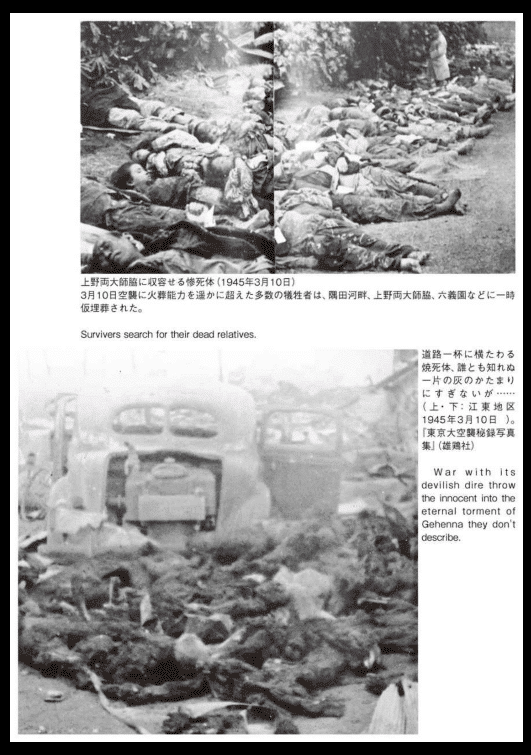
Destruction rate of over 40%.
Kochi Air Raid
125 B-29s flew over Kochi City. Between 1:52am and 2:52am, 1060.8 US tons ofincendiary bombs were dropped. 401 people were killed, 95 seriously injured, 194 slightly injured, 22 unknown, and the affected population 40,737. Affected area 4,186,446 sq m, 11,804 houses totally destroyed by fire, 108 houses half destroyed by fire.

Kochi is not a battlefield. A battlefield is a place where soldiers fought each other.
It was just the place where the US dropped the holocaust incendiary bombs, which did not require gas chambers, which the US did.
It was just a holocaust (Japanese genocide) that did not require gas chambers, a place where the US dropped incendiary bombs and the US was brutal.
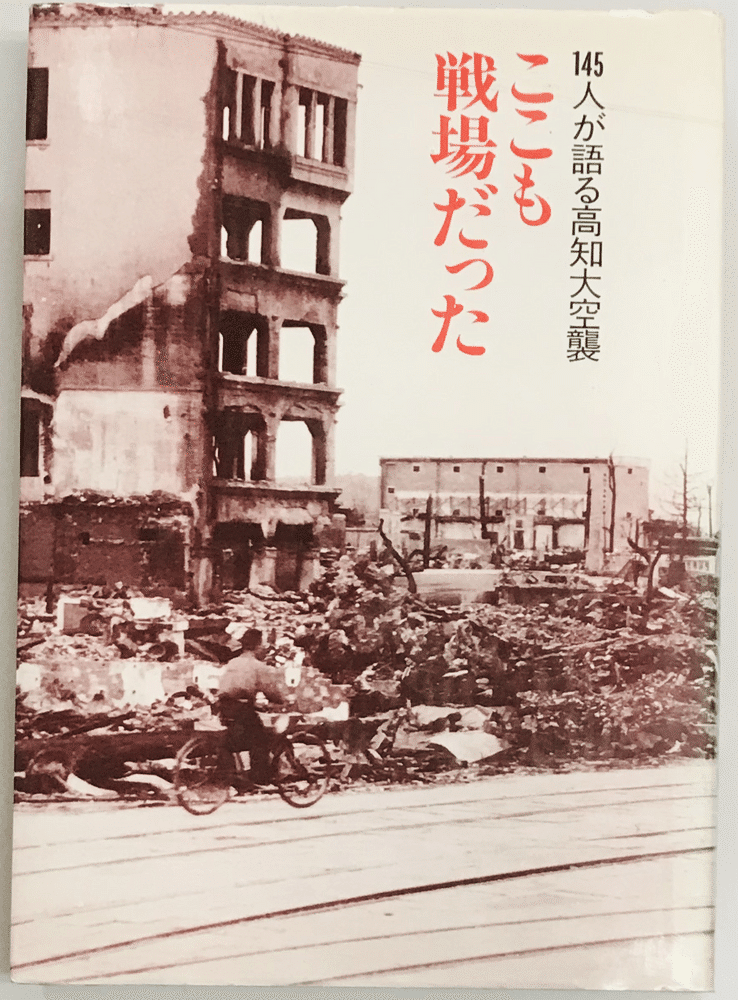
Kumagaya Air Raid
Kumagaya City in northern Saitama Prefecture was hit by an air raid that almost burnt down the city on 15 August, the day the war ended. 660 tonnes of incendiary bombs were dropped. 266 people were killed and more than 3,000 injured.
Hiratsuka Air Raid
From 16 July 1945 to the early hours of 17 July 1945, Tokyo was subjected to a massive attack by 132 B-29 bombers of the US Army. At this time, more than 410,000 incendiary bombs were dropped from the B-29s.
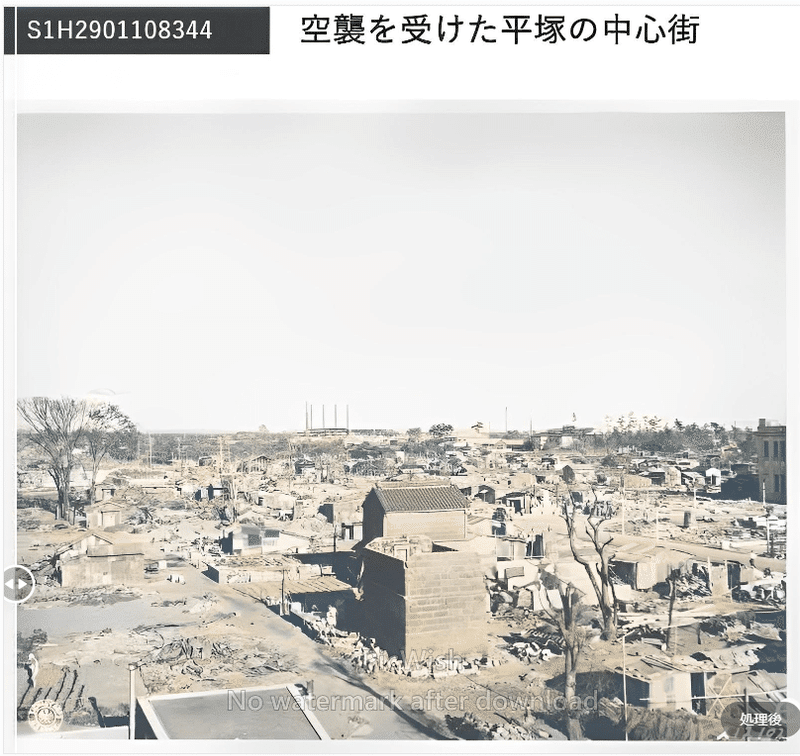
Air raids on Kagoshima
Kagoshima City was the direct target of a total of eight air raids between 18 March and 6 August 1945, but because of the attacks on northern Kyushu and the whole of Kyushu, the city was a transit point for US aircraft, and hardly a day went by when the shadow of an aircraft was not seen. The city was burnt to the ground in these eight air raids, and the total number of casualties in Kagoshima City reached 115,385, including 3,329 dead, 4,633 injured, 35 missing and 107,388 others.
The most devastating was the so-called Kagoshima Air Raid of 17 June. In a change from previous bomb attacks, an incendiary bomb campaign was launched at midnight to burn the entire city to the ground. An estimated 130,000 incendiary bombs were dropped that night, turning Kagoshima city into a sea of fire.

The Great Yokohama Air Raid
Indiscriminate bombing of the central area of Yokohama by the US military during the daytime on 29 May1945, by 517 B-29 bombers and 101 P-51 fighters in an incendiary attack that killed some 8,000 to 10,000 people.
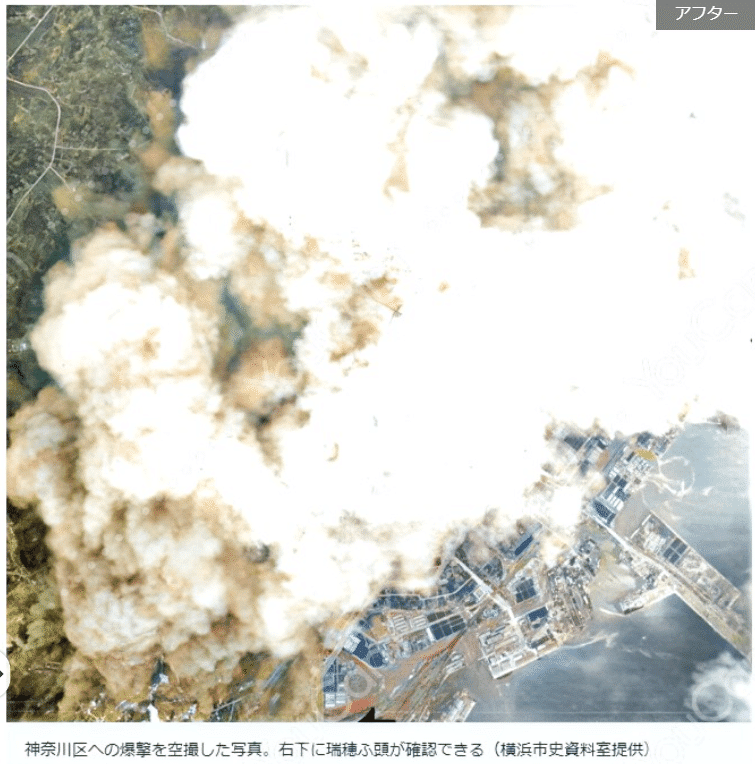
Sakai Air Raids
Sakai was the scene of five air raids, in which many of its citizens were killed.
Of these, the air raid of 10 July 1945 claimed more than 1,800 lives in a single night, and is known as the Sakai Air Raid.
War is fought between soldiers. The strategic bombing of the USA with the aim of killing civilians is a war crime.
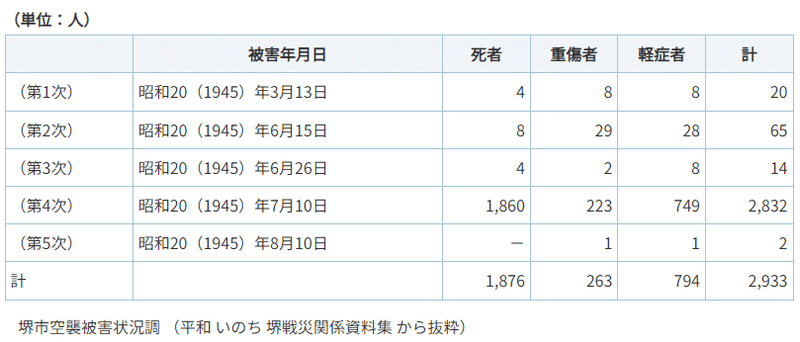
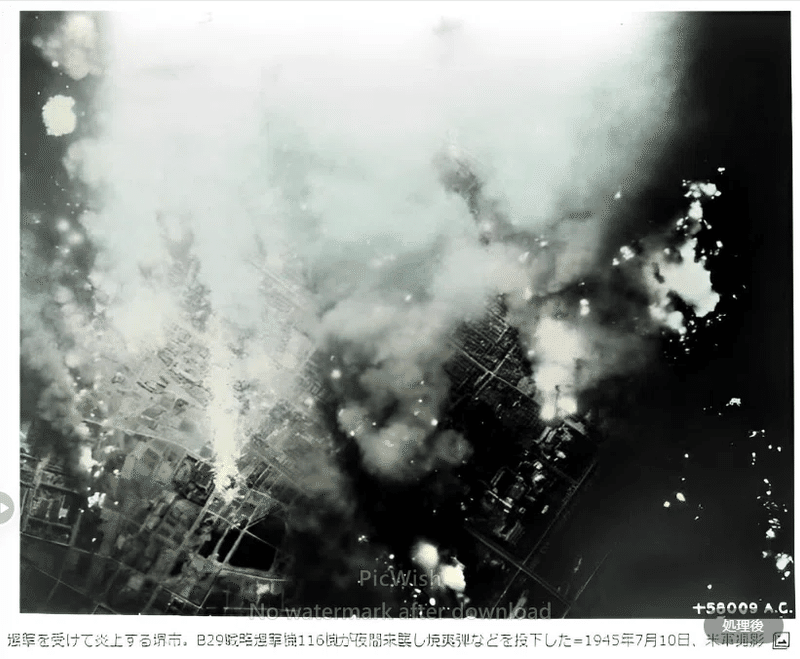
Nagasaki Air Raid
11.8.1944 Number of dead: 13 Number of wounded: 26 Incoming 24 B-29s
The target was the city of Nagasaki, but the raid missed the target and burned Hirado Oyamachi, Inasa-cho and parts of Furukawa-cho, with most of the incendiary bombs falling in the mountains in the direction of Daisen and Hikosan.
26.4.1945.26 Number of dead 129 Injured 278 Incoming B29 1 aircraft.
Dropped 4 tonnes of high-explosive bombs and seven time bombs on the city under no warning. The time bombs were aimed at destroying sea and land traffic.
29.7.1945 Number of dead 22 Injured 41 Incoming A26 32 aircraft
Wave after wave of attacks centred on the Mitsubishi Nagasaki Shipyard, bombing the northern and southern parts of the city. 51 tonnes of bombs and 6 tonnes of shrapnel bombs were dropped.
31.7.1945, casualties 11 wounded 35 Incoming 24 B24s.
Came in and dropped bombs outside the harbour and in the city under air raid warning.
1.8.1945.1 Dead 169 Injured 215 Incoming 24 B24s, 26 B25s.
112 tonnes of bombs were dropped mainly on munitions factories. The primary target was the Mitsubishi Nagasaki Shipyard and Machinery Works, and other facilities such as the Mitsubishi Steel Works and Nagasaki Medical College were heavily damaged.
1945.8.9 Number of dead 73884 Number of wounded 74909 Incoming B29 2 aircraft
Atomic bombs dropped over Matsuyama Town.
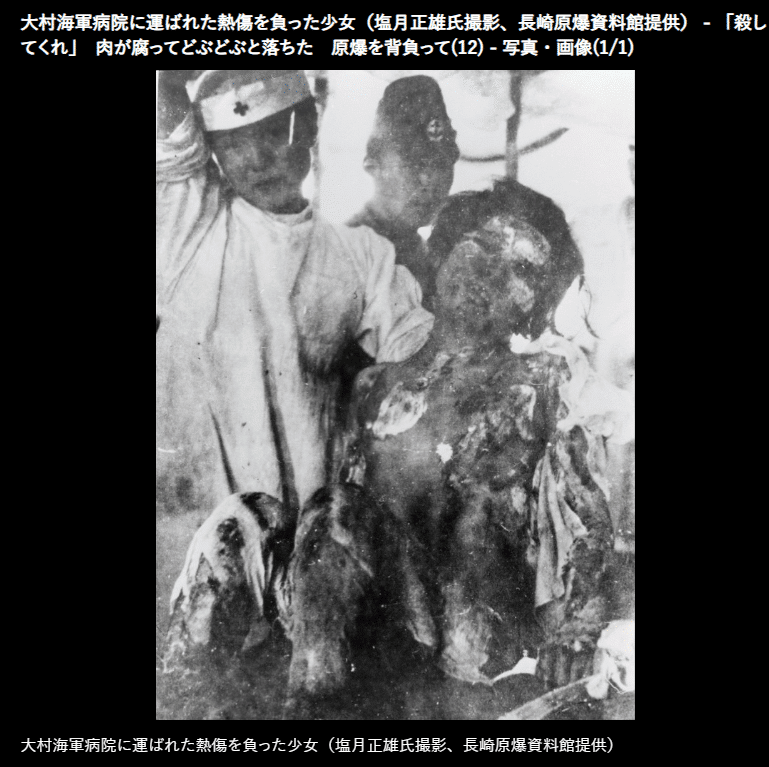
Chiba Air Raids.
The two air raids on 10 June and 7 July left approximately 70% of the city centre burnt to the ground, resulting in 1,595 casualties, 8,904 damaged houses and 41,212 victims.
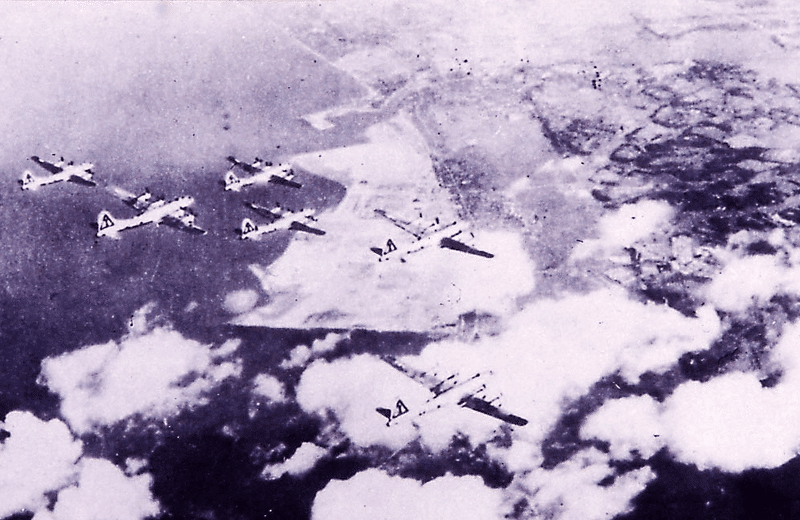
Choshi Air Raid
Air raid on the fishing town on 19 July1945, attacked by a formation of 91 B-29s, resulting in 1,181 casualties.
Inscription.
At the end of World War II, on 9 March and 20 July and 1 August 1945, Choshi City was bombed three times by enemy aircraft.
At that time, 337 of our compatriots tragically died in the war with deep emotion.
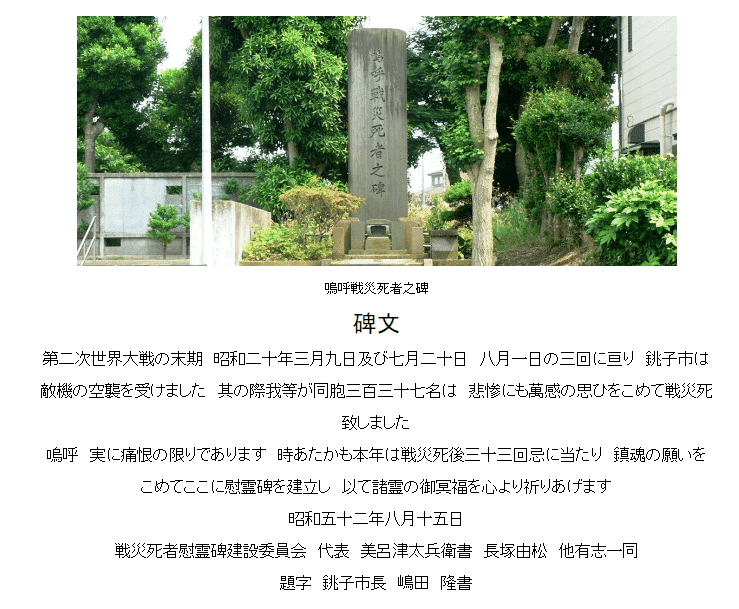
Omuta Air Raid
Air raid on 21 November 1944.
31 dead and 7 wounded on the Japanese side and one aircraft downed on the American side.
Air raid of 18 June 1945
This air raid was carried out by 116 B-29 bombers over the city centre from 1:00 to 3:09, dropping approximately 700 tonnes of incendiary bombs. On the Japanese side, 260 people were killed, 362 injured, 2,620 houses damaged and 13,841 people affected. On the US side, only 4.1 per cent of the urban area targeted for attack was destroyed by fire, leading to another air raid.
Air raid of 27 July 1945.
124 B-29 bombers took part, dropping some 875 tonnes of incendiaries. The amount of incendiaries dropped was equivalent to 1.25 times that of the 18 June raid, and the urban area of Omuta was almost completely destroyed by fire in the two raids. 602 people were killed, 1,038 injured, 9,331 houses damaged and 46,634 people affected.
An American military report notes that during this operation, the aircraft was intercepted by 25 to 30 Japanese fighter aircraft and one was shot down. The aircraft crashed in Yokoyama village (later Yame City), Yame County, killing two of the 11 crew members, one of the survivors was beaten to death by a member of a mountain-hunting patrol, and the remaining eight were executed in August of the same year after being taken into custody by the Western Army. They deserved the death penalty for the murder of civilians.
Air raid on 7 August 1945.
A total of 41 aircraft, 23 B-24 Liberators and 18 P-47 Thunderbolts, began bombing at 12.05pm. 240 people were killed, 300 injured, 245 houses affected and 1,320 people affected. During the raid, a Japanese anti-aircraft gun unit shot down one B-24, but the aircraft carrying the bomb crashed in the Fujita-cho area of the city, causing heavy casualties.
8 August 1945 air raid.
27 or 58 people killed, 23 houses damaged, 120 people affected.
Maebashi Air Raid
5 August 1945 92 B29 aircraft dropped a total of 723.8 tonnes of incendiary bombs (691.0 tonnes, 17.6 tonnes of shrapnel bombs and 15.2 tonnes of general bombs). Of the 28,771 houses in Maebashi, 11,460 were burnt to the ground and 58 half-burnt, killing 535 people and injuring more than 600. Of the city area of 3,592,173 tsubo, 805,300 tsubo (22%) were affected, and 60,738 (65.2%) of the total city population of 93,131 people were affected.
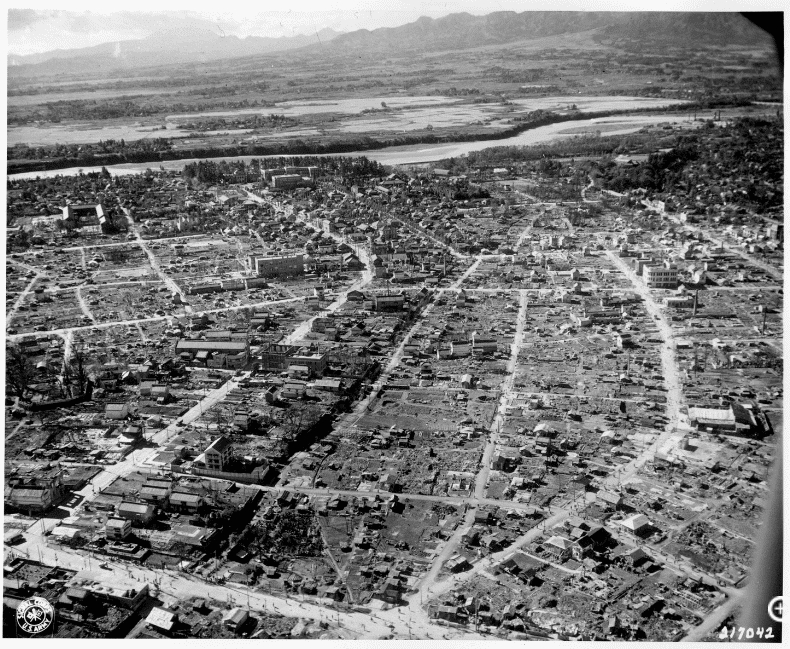
Sasebo air raid.
141 B-29 bombers dropped an estimated 1,200 tonnes of incendiary bombs. Immediately after the war, an American military official who visited the city to inspect it stated that "the destruction of the city was worse in Sasebo, which was carpet bombed, than in Nagasaki ".
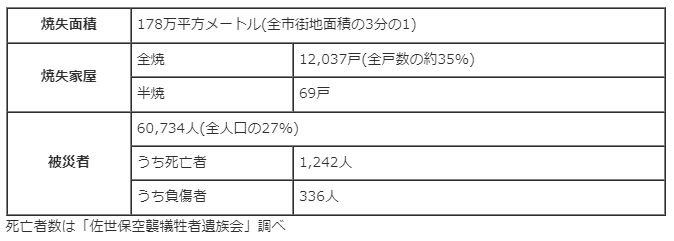
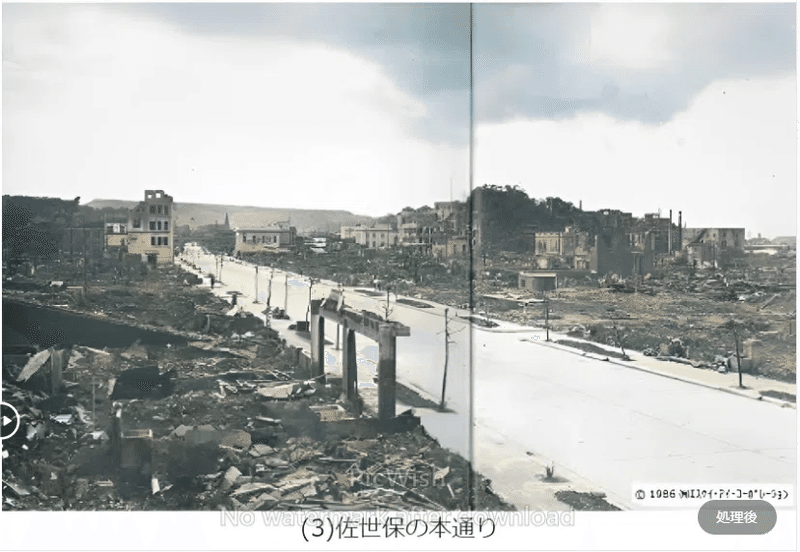
Ogaki air raids
Ogaki was bombed a total of six times, the first on 2 March1945 and a mock atomic bomb ( pumpkin bomb) on 24 July of the same year. The most damaging air raid on 29 July1945 (1945).
At midnight on 29 July 1945, an air raid was carried out by a formation of B-29s. Ogaki Castle (then a national treasure, equivalent to today's important cultural property ), Kaikaku-ji Temple (Ogaki branch temple) and other buildings were destroyed by fire in this air raid. Most of the city area was destroyed by fire and only a few buildings remained, including Ogaki Station.
Number of aircraft in the air: 90.
Incendiary bombs dropped: approximately 20,000.
Dead: 50 people
Injured: about 100 people
Totally or partially destroyed: about 4,900 houses
Affected: approx. 30,000 people
Ogaki City's population at the time was approximately 56,000.
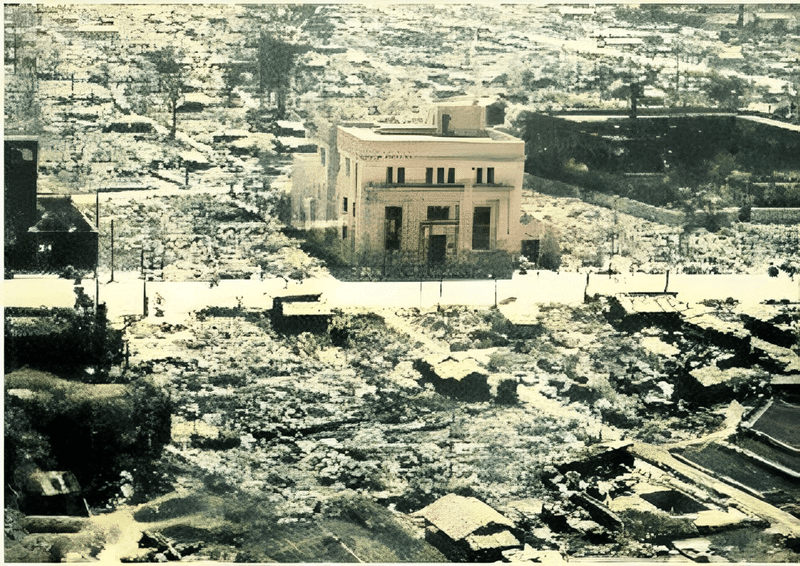
Kure air raid
It was at 02:02 am on 2 July that B-29s reached the overcast skies over Kure and dropped their first bombs. Using the blazing flames as a marker, the B-29s entered the skies over Kure one after another, dropping incendiary bombs from the periphery of the beehive-shaped city centre to the centre of the city.
The citizens were burnt to the ground, their escape routes blocked, and those who escaped to air-raid shelters were steamed to death by the raging flames and billowing smoke.
A total of 152 B-29s attacked Kure, dropping a total of 160,454 incendiary bombs (1,081.7 tonnes) in the air raid, which continued until 2.05am. The city of Kure was burnt to the ground in this air raid, and the death toll is said to have been over 2,000. The raid, which was the 'maximum effort' of the B-29s, caused the largest firestorm in Kure since its inception, claiming the lives of the citizens, destroying their livelihoods and transforming the city's landscape.

Destruction rate of 30% or more
Ise Air Raid (Uji Yamada Air Raid)
14 January 1945.
US B-29s attacked Uji Yamada City (now Ise City) and carried out the first air raid on the city. One person was killed and 16 injured in this air raid.
On 28 January 1945, ship-borne aircraft opened fire; on 15 February, bombs were dropped on Ichinoki-cho, and Electron incendiary bombs were dropped on the Hamasato area and neighbouring Misono village. A fire caused by incendiary bombs broke out in the vicinity of Wahime Palace. One person was killed and four slightly wounded in the attack; on 14 March, 20 oil incendiaries and two small bombs were dropped on the mountain forests of Maeyama town, but they failed to detonate and caused no damage.The bombs were used to destroy the lives of civilians, destroy their livelihoods and change the landscape of the town!
P-51 gunfire.
The air raid at 11.20am on 22 April 1945 was a shooting by some 40 P-51s.
The P-51s attacked in waves in multiple formations, causing damage not only to Uji Yamada City but also to the neighbouring towns of Futami, Omata, Shirota and Kitahama. One building at the Yamada factory of Shinko Electric was burnt to the ground, one house, one uninhabited house and one ship were damaged, resulting in two deaths and 14 injured.
On 24 July, a bomb attack caused a fire in the outer gardens of the outer palace.
28/29 July, the largest air raid.93 B-29s attacked with 734.6 tonnes of incendiary bombs.
Damage covered 27,751.35 m2 (equivalent to 50% of the city area), 4,517 houses (equivalent to 30% of all houses) were destroyed and 22,600 people (equivalent to 35% of the total population) were affected.
On the night of 1 August, about 25 B-29s attacked the area, and on 14 August, small bombs were dropped on Miyago-cho and in front of Yamada Station, and machine-gun fire wasalso carried out.
Nishinomiya Air Raids
Nishinomiya was subjected to five air raids, which devastated the city, destroying large parts of the urban area and causing numerous casualties. With a population of approximately 130,000, Nishinomiya was positioned as a 'small and medium-sized city', and after the destruction of the metropolis, the urban areas and residents of 137 cities across the country were targeted, regardless of whether they had industrial sites o

Shimonoseki air raids
From March 1945 (Showa 20), US aircraft attacked the skies over the Kanmon region every night, dropping some 4,700 mines over the straits. This number accounted for nearly half of the 11,000 mines dropped across the country, and every vessel passing through the straits was sunk: 157 large ships of between 5,000 and 10,000 tons, and more than 200 ships of 5,000 tons or less, were left in ruins. The ground incendiary raid began at around 1:10 am on 29 June of the same year, when a formation of large aircraft reduced the eastern part of the city from Dannoura to Miyata, Karato and Nanbu towns to a burnt field. The next air raid was at 0:10am on 2 July of the same year, when almost all of the city's urban areas were burnt to the ground, including the towns of Toyozenda, Nishi-Hosoe, Irie and Maruyama, as well as Higashi-Otsubo, Takao, Kannonzaki, Nanbu, Nishinohata, Tanaka, Ueda-Naka, Sonoda and Miyata, in devastating conditions. The death toll from these two air raids was 324.
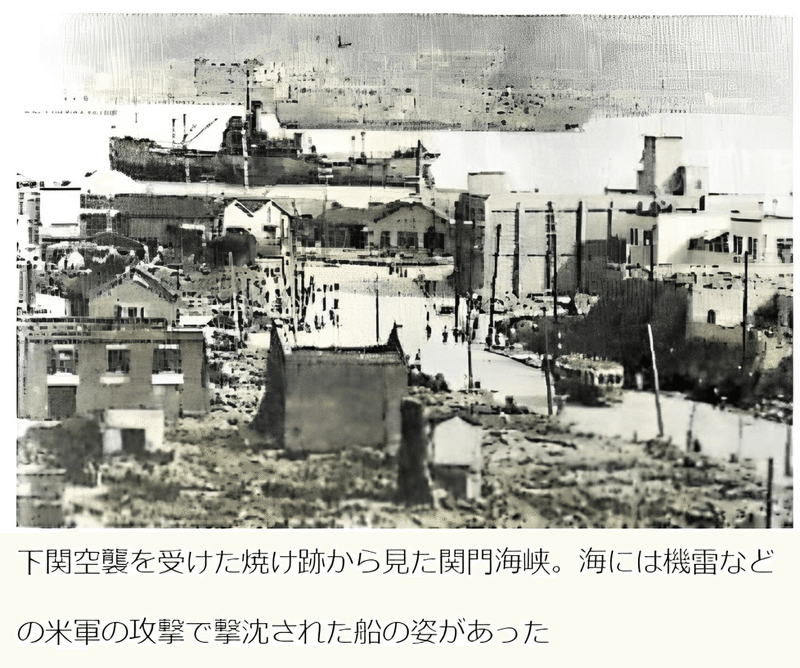
カラー化・高画像処理済
Nobeoka Air Raid
In the early hours of 29 June1945, Nobeoka was hit by an air raid by incendiary bombs from the US Army, resulting in a catastrophic loss of 130 dead and 3,765 damaged houses.
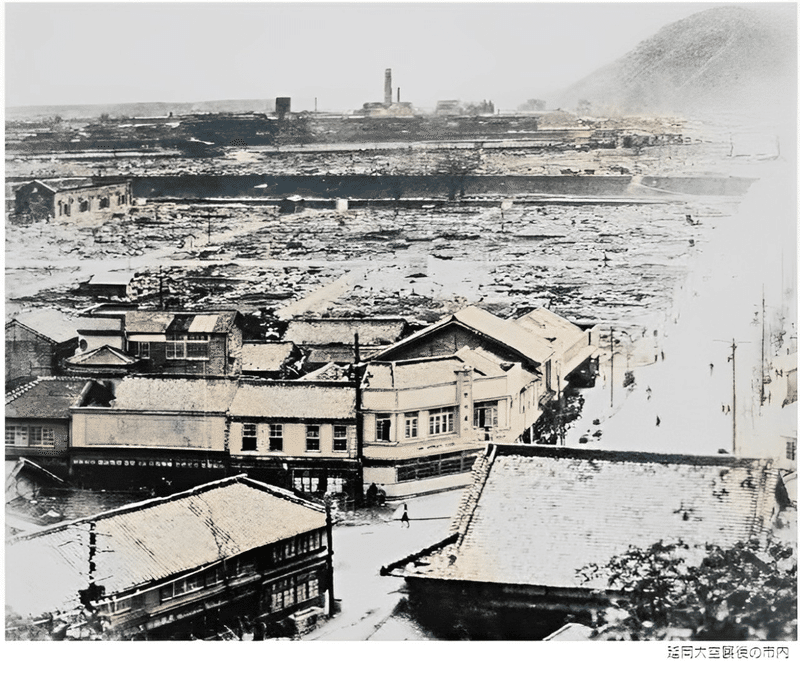
Yokkaichi Air Raids
Yokkaichi was hit by a massive air raid on 18 June 1945, followed by a total of nine air raids until 8 August, which claimed the precious lives of more than 800 civilians.
At 0:45am on 18 June 1945, 89 US B-29 strategic bombers dropped 11,000 incendiary bombs, weighing 567.3 tonnes. The damage on 18 June was heavy, with 505 people killed, 503 seriously injured and 9,372 houses burnt to the ground, leaving the citizens in a state of stupefaction. From then until 8 August, the city was hit by a total of nine air raids. The human toll of all the air raids amounted to 49,198 victims, 808 dead, 1,733 injured and 63 missing.
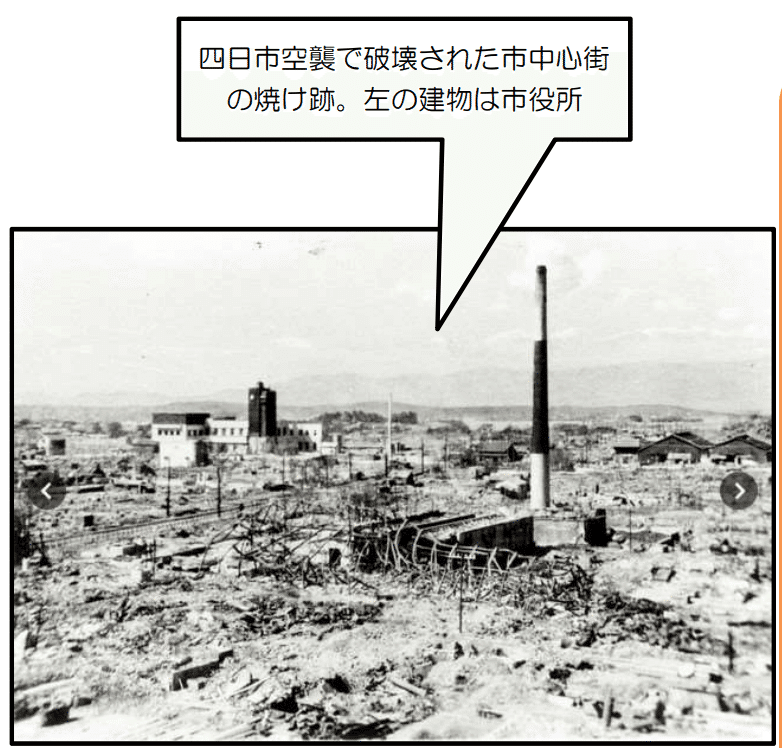
Utsunomiya Air Raid
10 July 1945 - US bank aircraft gun-bombed Utsunomiya and Utsunomiya Minami airfields, damaging nearby houses and killing about 5 people.
Five students from Shimono Junior High School (now Sakushin Gakuin High School ) were killed during metal recovery work at the 194 Powder Factory. In addition, KoganeiStation (now Shimono City, Tochigi Prefecture) was also hit by the raid, killing 31 people ( Koganei Air Raid ).
30 July 1945 - US fighter aircraft bombed the city of Utsunomiya, killing more than 10 people.
13 August 1945 - US fighters bomb Utsunomiya airfield, killing about 10 people.

Kawasaki Air Raid
The damage caused by this air raid was so severe that the present-day Kawasaki, Saiwai, Nakahara and part of Takatsu wards were attacked, and the city centre south of Kawasaki Station was burnt to the ground, leaving only the City Hall and other buildings. There were about 20 air raids on Kawasaki, including a major air raid on 15 April, and the death toll from these raids was recorded as 768, 1,001 or 1,520, with more than 35,000 houses damaged and over 100,000 people affected. In addition to this, there are reports of many more deaths on the banks of the Tama River and in the dormitories of Nippon Electric Co. Some say that the casualties were relatively low because people fled immediately without extinguishing the fire, based on the experience of the Tokyo Air Raid a month earlier, and there were places to escape, such as fields and riverbanks, but even so, so many people were killed.

Nagoya air raid.
The US should pay compensation for damages caused by the burning of Nagoya Castle.
According to records, the first air raid on Nagoya was the so-called Doolittle Raid on 18 April 1942, when a single North American B25 aircraft attacked the city. This was the first surprise bombing of the Japanese mainland by the USA.
Damage was very limited. Full-scale air raids began on 13 December 1942, starting with B-29 raids on the Mitsubishi Engine Daiko Plant (now Nagoya Dome), which numbered 63 in total.
In December, the B-29s bombed munitions factories, mainly related to Mitsubishi, three times.
Entering 1945, there were nine bombings in January, but from this time onwards, air raids on private homes (war crimes) began. At this time, bombs were included considerably, and the number of planes often flew in with one plane, dropped bombs in pieces and left immediately, but on two occasions there were 60 or 70 planes.
In the absence of a law to provide relief to civilians affected by wartime air raids, Nagoya City increased its own Civilian War Injuries Relief and Migration Fund to 100,000 yen this year.
In my opinion, the US should pay compensation for damages to prevent such war crimes from happening again, what do you think?
Destruction rate of less than 20
Sendai Air Raid
10 July 1945 123 B-29s dropped over 10,000 incendiary bombs, killing over 1,000 people.
Osaka Air Raids
The merchant town of Osaka was also bombed.
The first air raid on Osaka took place from midnight on 13 March1945 to dawn the next day ( Japan Standard Time, same below), followed by air raids on 1 June, 7 June, 15 June, 26 June, 10 July, 24 July and 14 August. More than 10,000 civilians were killed in these raids.
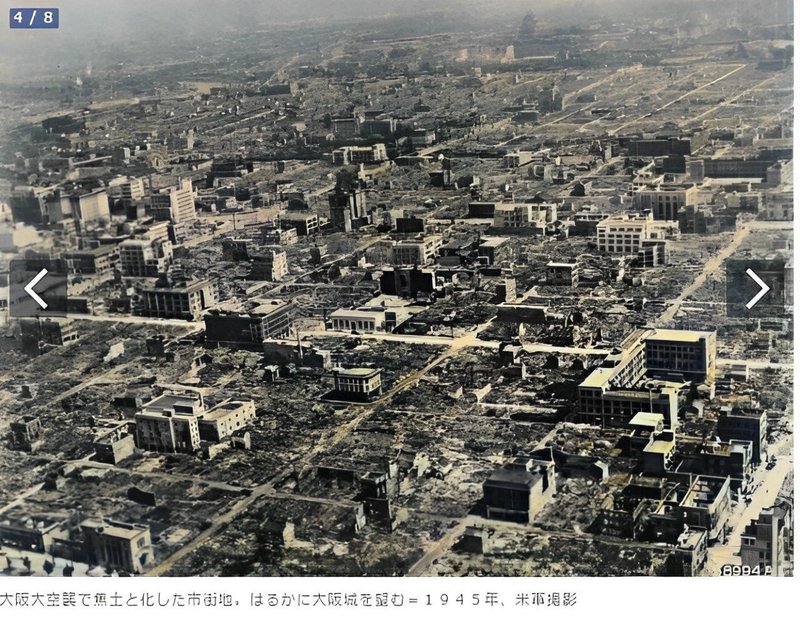
Oita air raids
There were many air raids in the country town of Oita.
Approx. 250 raids
Approx. 7,000 aircraft
About 85 attacks
Approx. 3,000 attacking aircraft
Dropped bombs approx. 1,650
Approx. 9,500 incendiary bombs
Period.
18 March to 11 August 1945
Damage
485 dead
718 injured
Houses burnt down 5,398
373 houses half burnt down
361 houses totally destroyed
372 houses partially destroyed
There was a wartime US air raid on Hodojima Primary School on a remote island in Oita Prefecture and the massacre of all first- and fifth-graders by machine-gun fire on fleeing children. 127 children and two teachers were killed in this attack. Give the children, who are juniors in this school, a place to talk about the horrors of war,
We should make sure that the US never commits war crimes again.
Children killed by US troops.
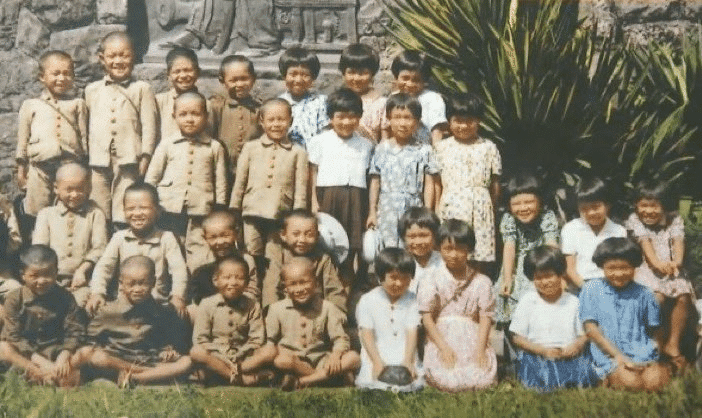
Ube Air Raids.
Eight air raids began on 26 April 1945, the third on 2 July being the most damaging, with about 100 B-29s dropping incendiary bombs for one hour and 42 minutes.
Over 300 people were killed or missing.
Kitakyushu Air Raid
On 8 August 1945, some 2,500 people were killed or injured and some 14,000 houses were destroyed in the former Yawata City (now Kitakyushu City) in Fukuoka Prefecture.
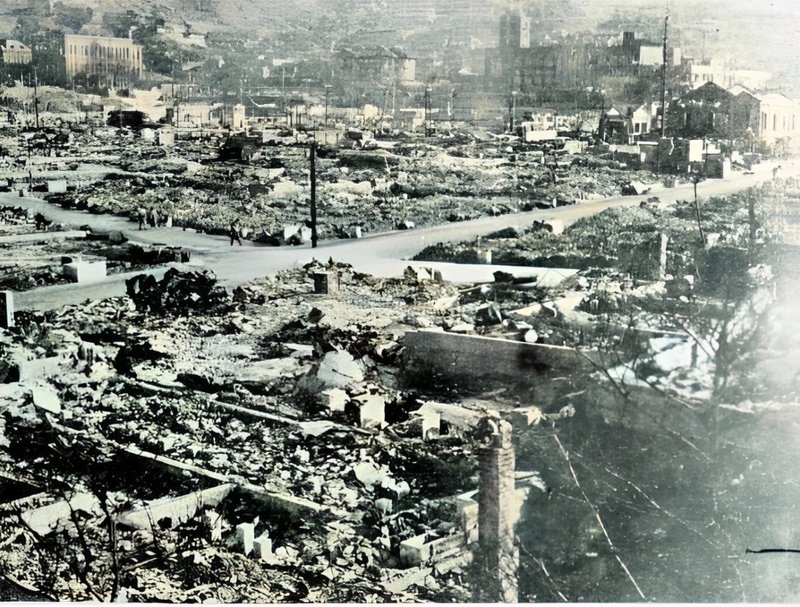
Air raid on Fukuoka
Air raid carried out by the US Army from 19 June 19 45 to the following day, 20 June1945. It targeted the urban area ofFukuoka City,Fukuoka Prefecture. More than 1,000 people were missing or killed in the raid.
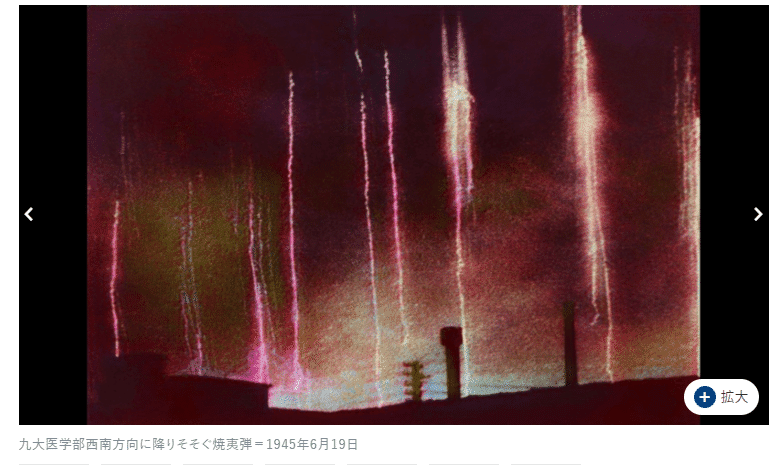
Kumamoto Air Raid
Damage included 9077 houses damaged, 36314 people affected, 388 dead, 475 seriously injured, 13 missing, and 9077 houses destroyed or burnt down.
Isesaki Air Raid
This was an air raid onIsesaki City,Gunma Prefecture, carried out by the US Army between 08:08 and 02:15 on 15 August1945. It was the last air raid on the Japanese mainland, along with the Tsuchizaki air raid in Akita City, Ak ita Prefecture,and the Kumagaya air raidin Kumagaya City,Saitama Prefecture. According to the Isesaki City History, 84 US B-29 bombers flew over Isesaki from midnight 14 August to early morning 15 August 1945, dropping 614 tonnes of incendiary bombs and 27 bombs. A total of 40 people were killed - 29 in the former city, 7 in the former Misato Village, 3 in the former Nawa Village and 1 in the former Miyago Village - and the city area was extensively destroyed.

Amagasaki Air Raid
On the south-west wall of the former Kaimei Elementary School, marks reportedly left by US military aircraft are preserved, along with an explanatory board. They are thought to be the marks of machine-gun fire from P51 fighters that flew in as a covering force for B29s on 1 June 1945.

Saga Air Raid
From 5 August to early morning of 6 August 1945, the area around Saga City was baptised by B-29s. About 30 B-29s departed from Marianas Air Base, flew northwards along the west coast of Kyushu and entered the skies over the Saga Plain, and from about 11.30pm on 5 August to 1am on 6 August, for about one and a half hours, attacked the Kitakawasagoe, Nishi-Yoga and Morotomi areas with incendiary bombs. In addition, indiscriminate machine-gun fire from Grumman fighter aircraft flying from aircraft carriers approaching the mainland was also hurled at the human figures.
The damage to the village of Kitakawazoe during the Saga air raid was recorded as the primary school being completely destroyed by fire, and 91 houses, including Iwashoken and Hikarugenji, being burnt to the ground, with 21 people killed. Damage during the Saga Air Raid was recorded as covering the former Saga City, Morotomi Town, Kawazoe Town, Higashiyoga Town and Kubota Town, with a total of 61 people killed and 443 houses destroyed.
8月5日 佐賀空襲
— J.WH (@JPNHistoria) August 5, 2018
23:41~23:56、米第20空軍B-29 63機、佐賀市川副町や諸富町を中心に焼夷弾爆撃。死者61名。焼失家屋443戸。 pic.twitter.com/DuvCb5lOaC
Conclusion.
Mistakes on wiki.
wiki :Despite the vulnerability of Japanese cities to incendiary bombs, the firefighting services lacked training and equipment, and few air raid shelters were constructed for civilians. As a result, the B-29s were able to inflict severe damage on urban areas while suffering few losses.
Facts.:Japanese private houses had tiled roofs and were more resistant to fire than American 2×4 timber-based houses.
The women who were left behind because men had gone to war often practised firefighting drills.
US military commander Lemay attacked them, knowing that those left behind were women, children and the elderly. This is a clear war crime.
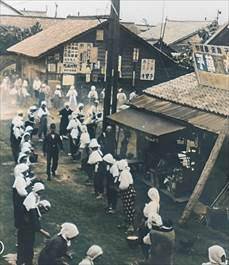
wiki : In addition to the loss of mostly civilian life, the raids contributed to a large decline in industrial production.
International Law:This is not the right thing to do from a humanitarian standpoint.
Airstrikes that attack civilians are war crimes and should not be done.
これは人道的見地から正しいことではない。
民間人を攻撃する空爆は戦争犯罪であり、行うべきではない。
この記事が気に入ったらサポートをしてみませんか?
